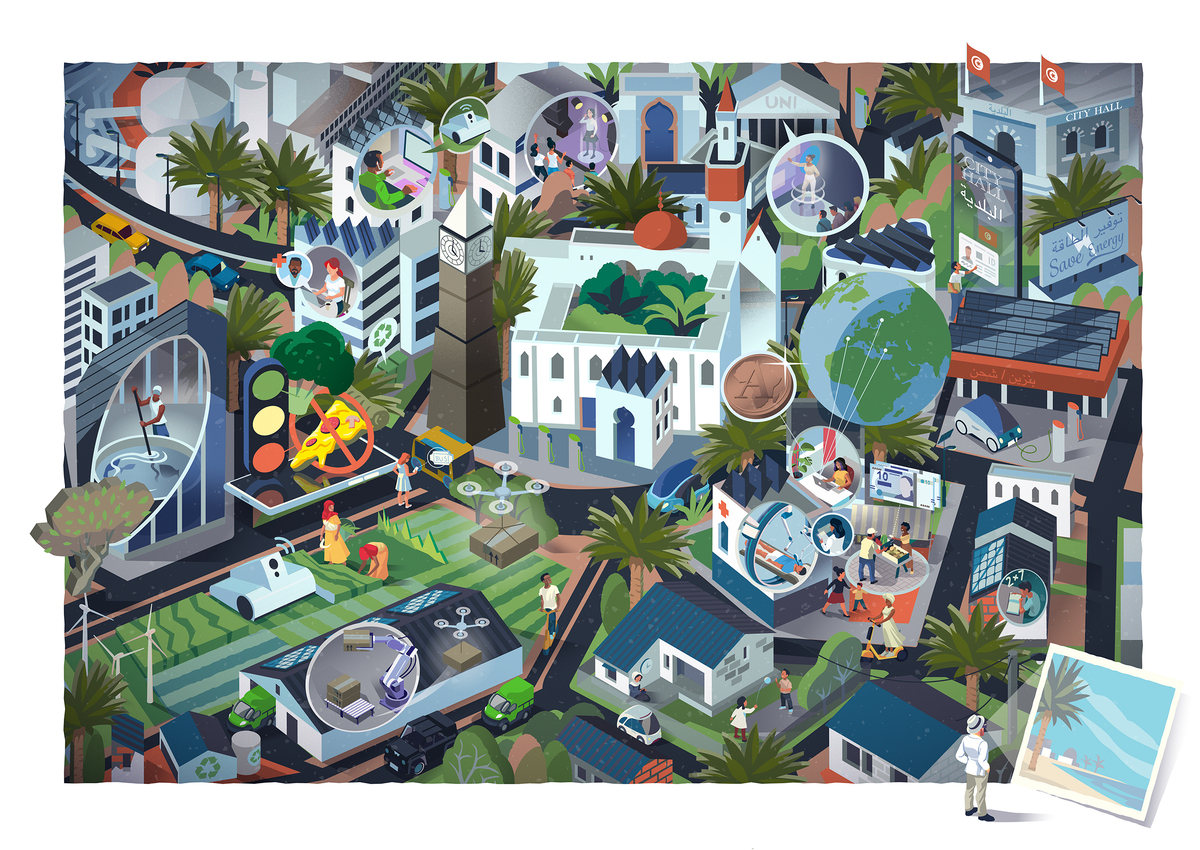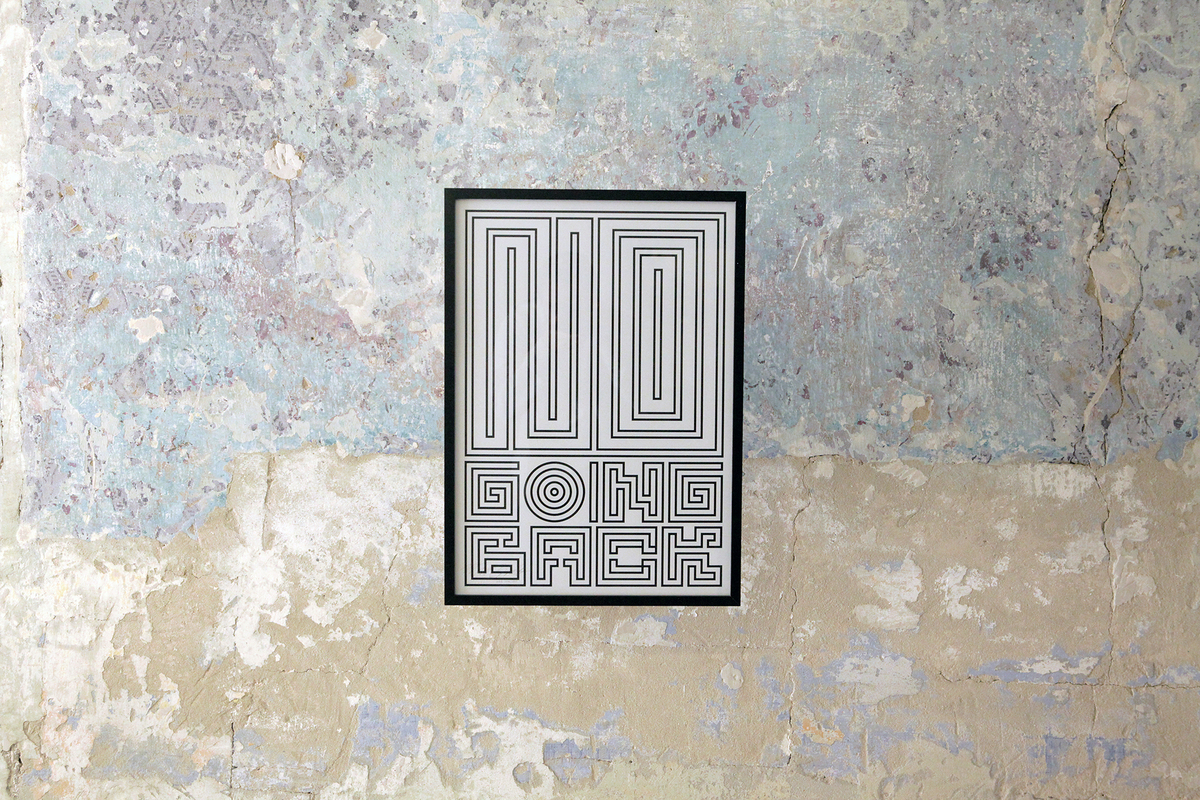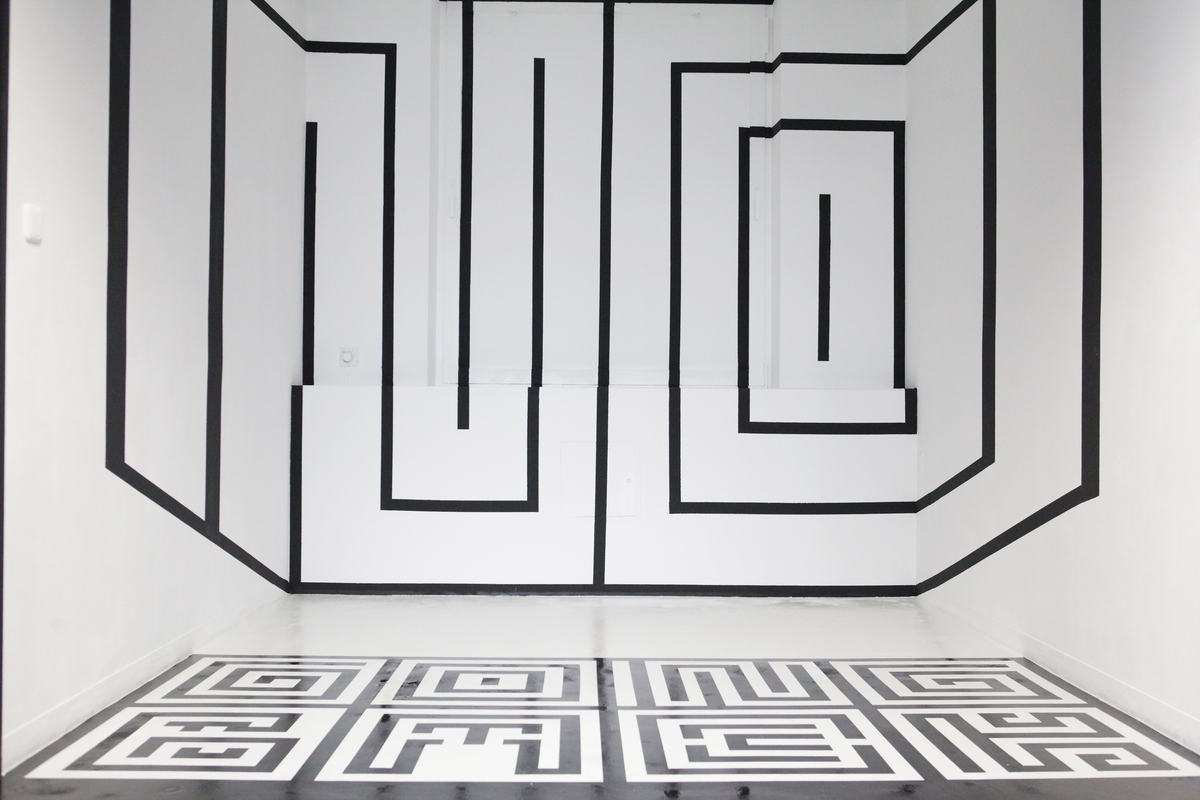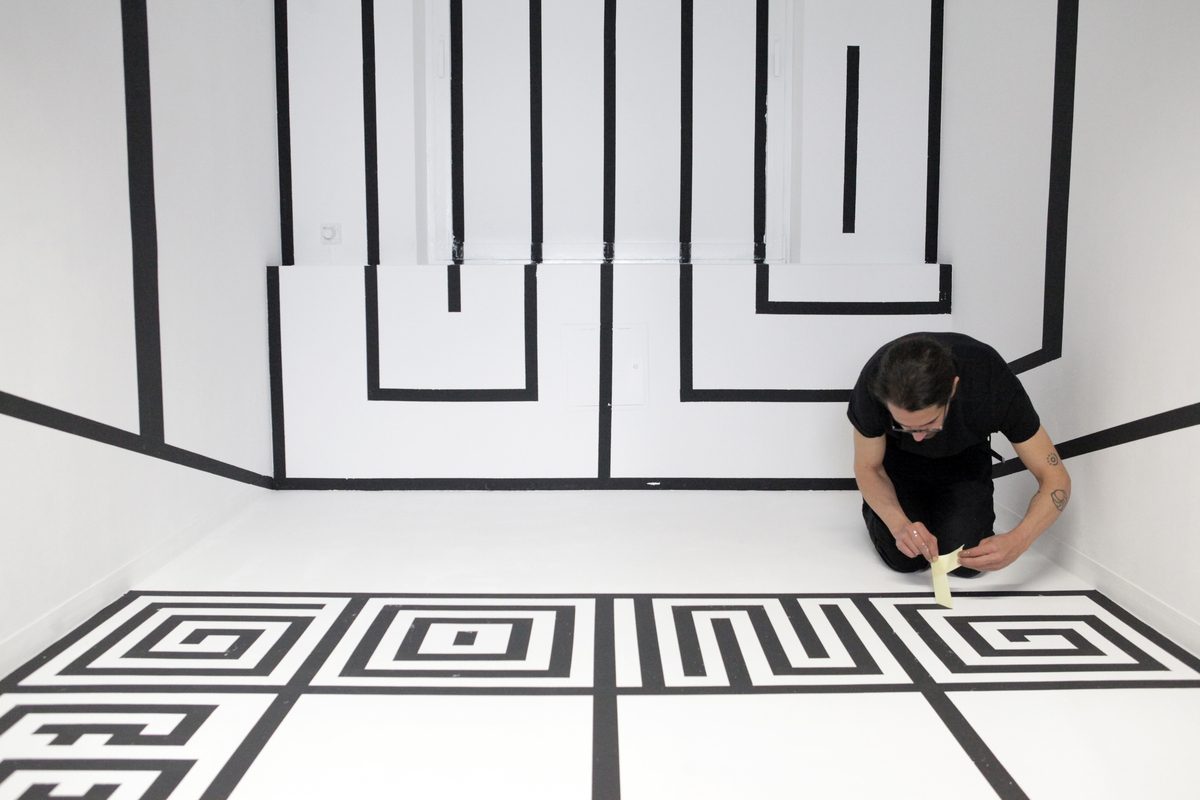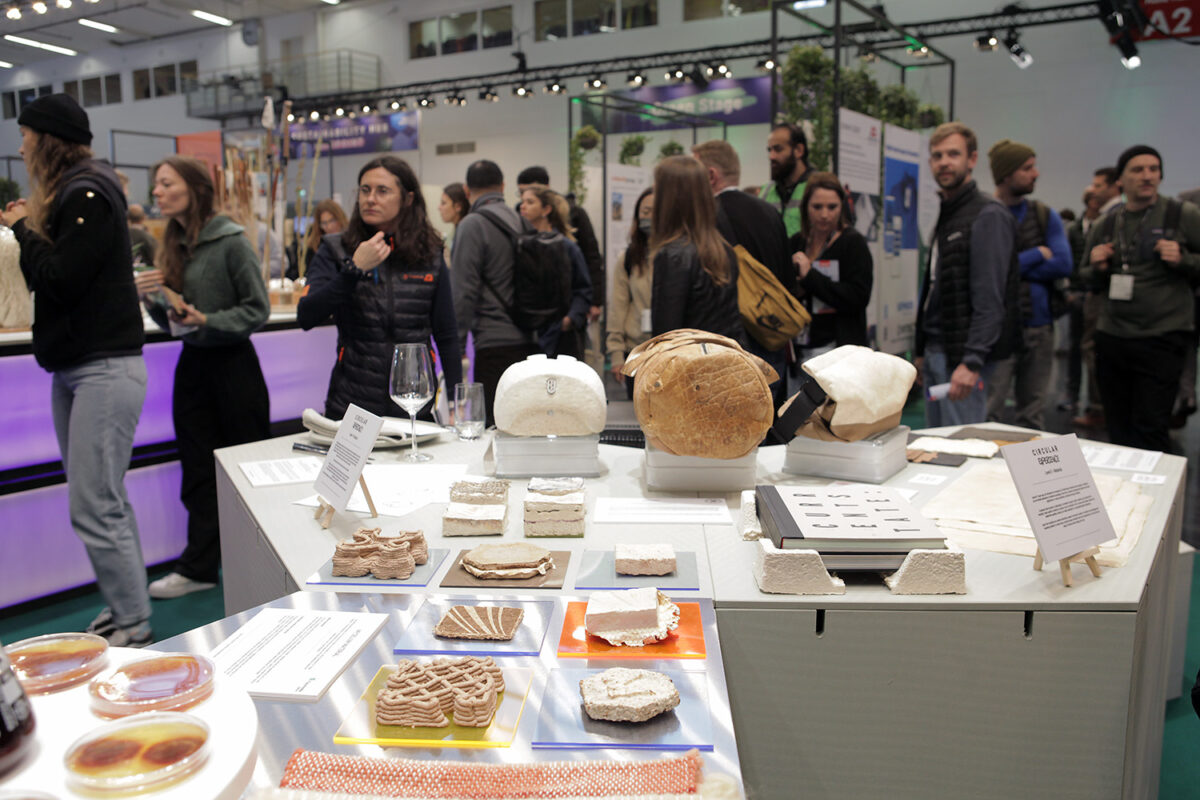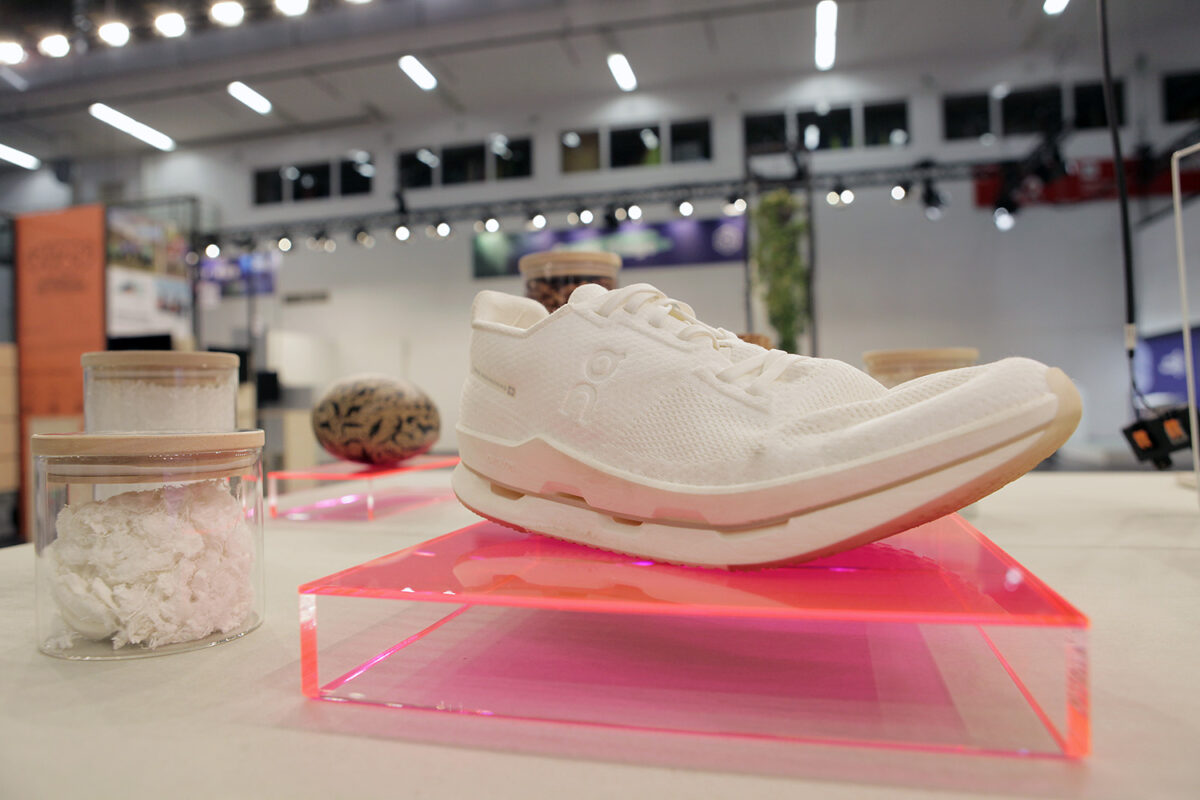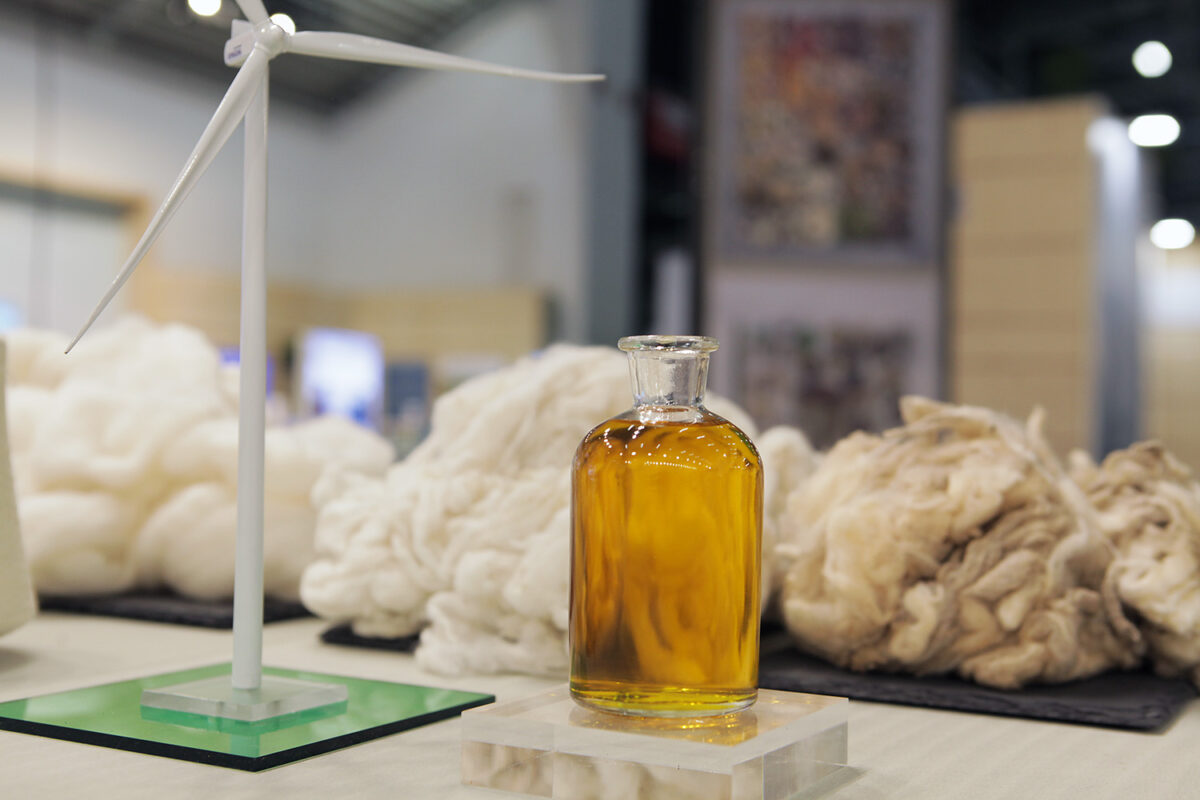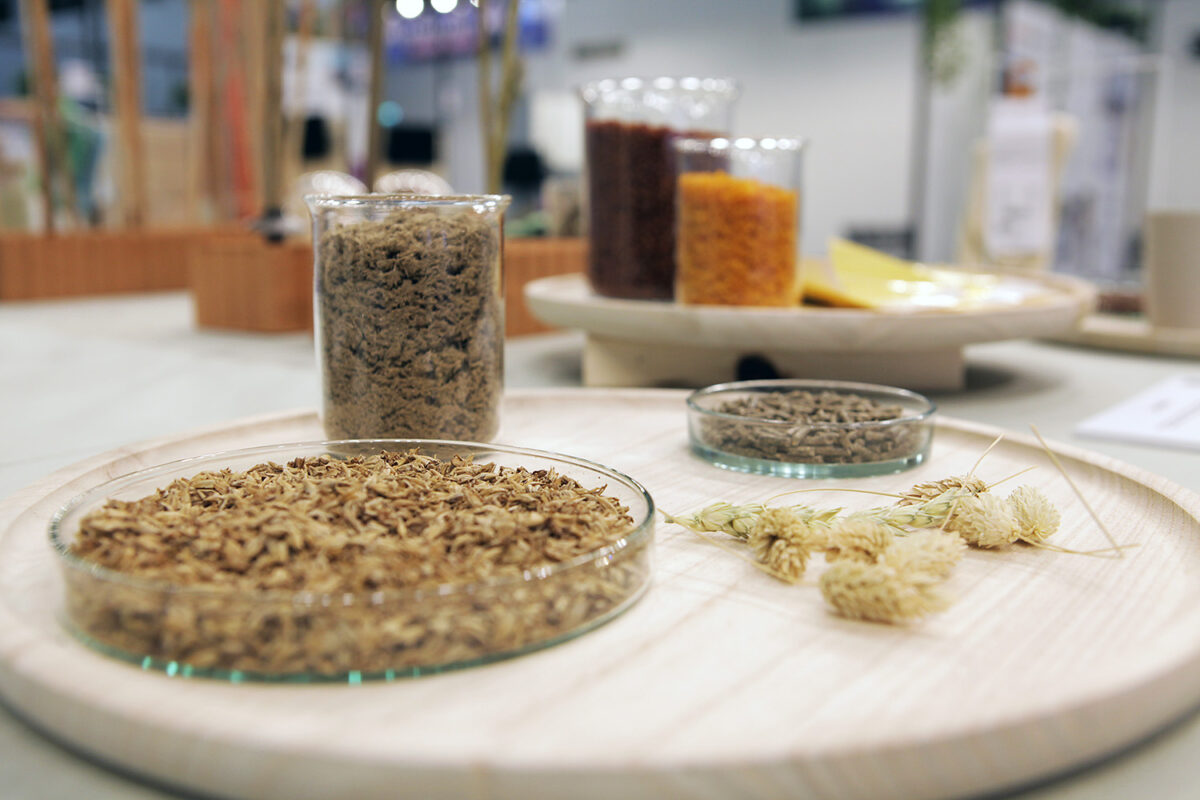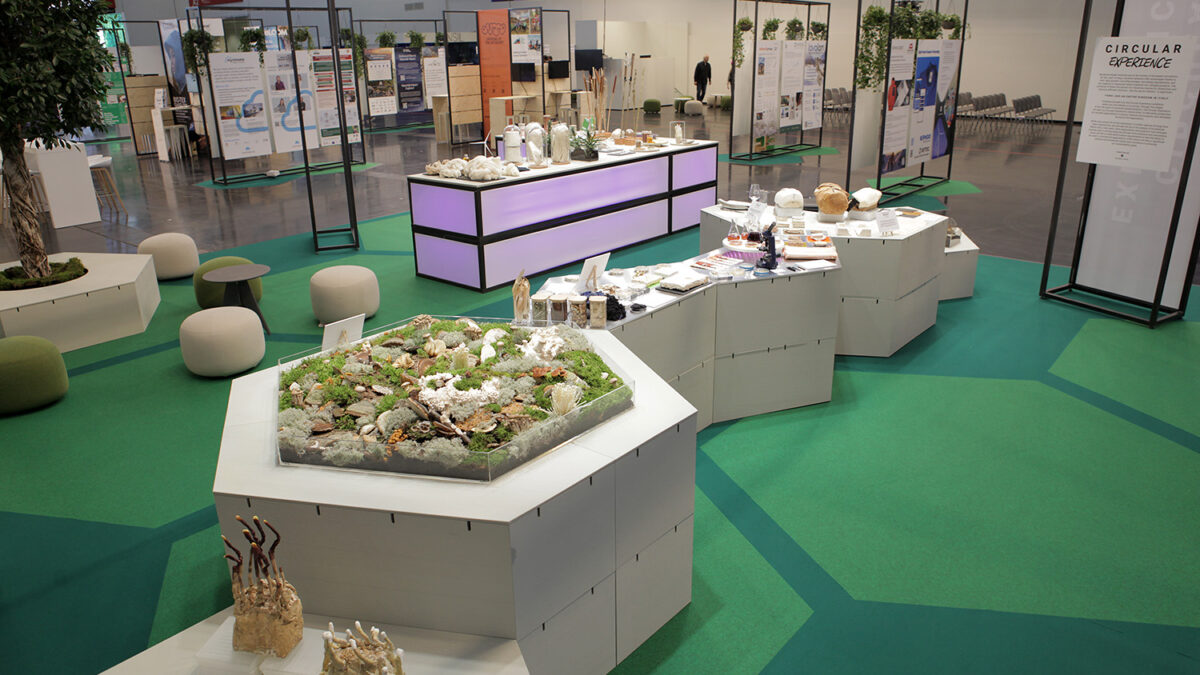
STUDIO NIMA, design for responsible social innovation
Founded by Leonhard Nima in Munich, Studio Nima is committed to developing impactful solutions for social innovation and social business. Specifically, it aims to accelerate the emergence and growth of innovative projects that sustainably address contemporary social and environmental problems through the use and implementation of smart, efficient, and sustainable solutions together with a global network of experts and partners. Studio Nima works in several impact areas, including job creation, the circular economy, the future of food, and mobility. Their services are very diverse: from the development of research-based interventions in the social innovation ecosystem for policy making to specific business support for social entrepreneurs. A 360-degree view of unpuzzling and repuzzling the complexity needed for a responsible future. (Cover Circular Experience & Material Lab at ISPO Munich)
One of the many examples of their approach is the Circular Experience & Material Lab exhibition on circular materials that Studio Nima curated and hosted as part of the Sustainability Hub at the ISPO Munich sports fair in November 2023 – the world’s largest multi-segment trade fair for the sports industry, which attracts more than 40,000 visitors each year. We, therefore, asked a few questions about this project and took the opportunity to learn more about the method and services they offer.
c
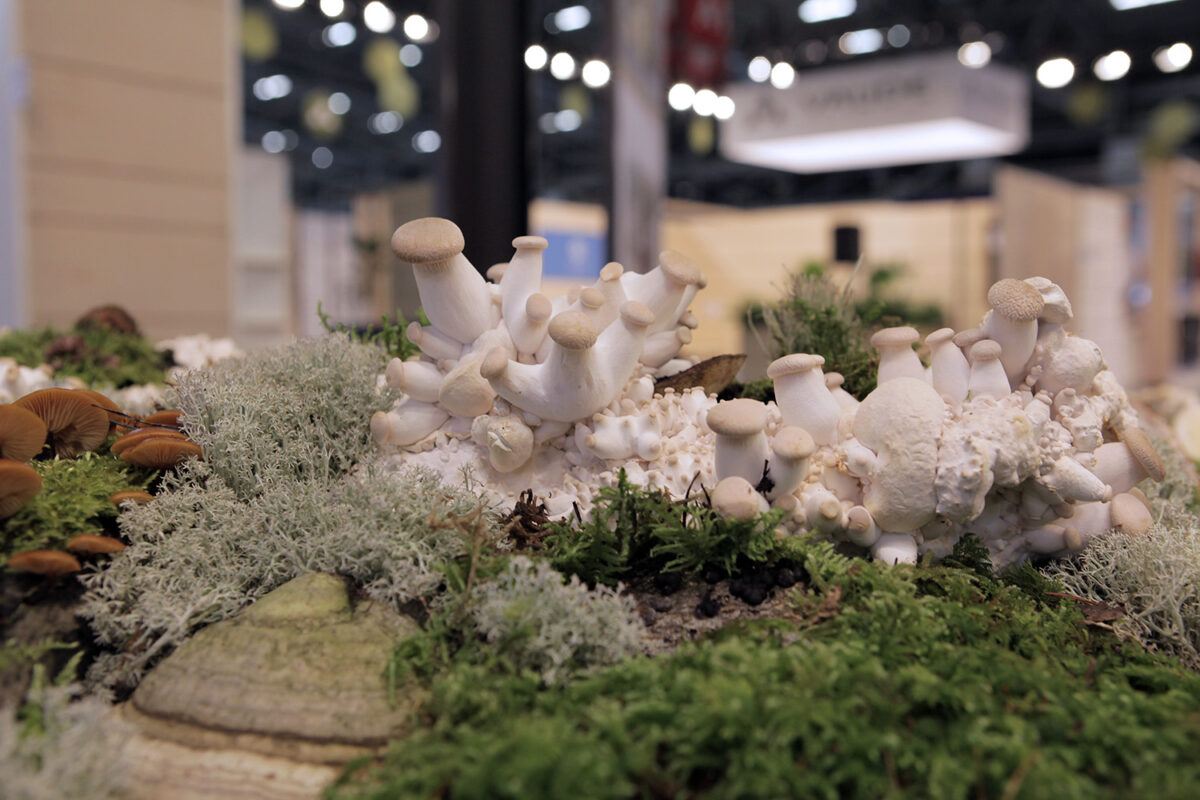
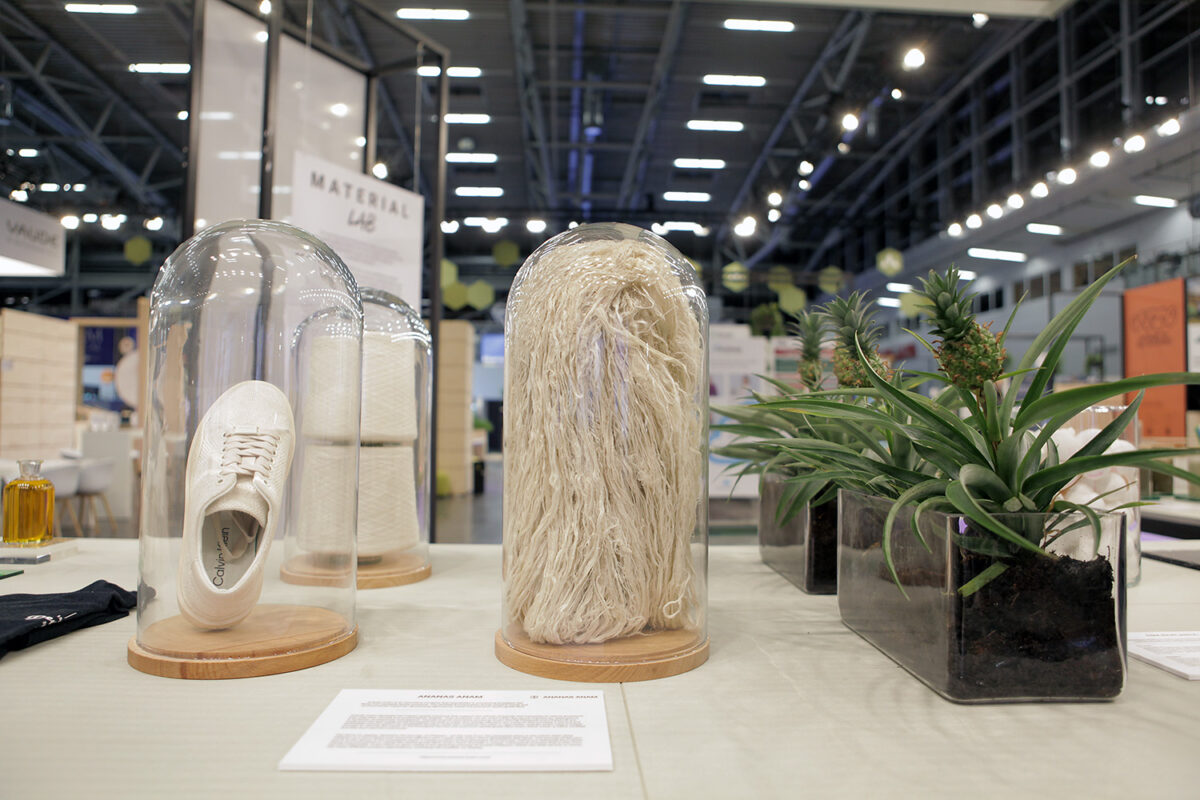
c
Talking about the Circular Experience and the Material Lab, how did the new format for the exhibition come about, and how did you design the space?
The Circular Experience and the Material Lab were new exhibitions as part of the Sustainability Hub at ISPO Munich 2023, the largest sports fair in the world. The main idea of the exhibition was to showcase some of the most innovative circular materials in an inspirational and tangible way. As part of the Material Lab we had bio-based polymers, biodegradable yarn, and textiles, and plant-based down feather alternatives. We explored emerging material innovations made from biowaste from eggshells and agricultural by-products such as pineapple leaves, algae, and hemp. The Circular Experience revolved around one specific circular material: mycelium, and we showcased the life cycle of mycelium-based products, from leather alternatives to packing materials to a bicycle helmet made out of mycelium. Both parts of the exhibition were designed with the objective to provide valuable impulses for new solutions within the sports industry.
c
Have you already thought about replicating this format in other fairs?
Yes indeed. The feedback from visitors and exhibitors was overwhelmingly positive. Therefore, as a first next step, we just started to work on the next edition of the Material Lab as part of OutDoor by ISPO that will take place June 3-5, 2024, in Munich, and in parallel, we are already making first plans for ISPO Munich 2024 that will take place at the beginning of December.
Moreover, we are currently exploring opportunities to develop the idea further into so-called Living Labs, where we combine the exhibition idea with interactive educational formats. And we would like to bring these Living Labs to many different places, from museums to public spaces and festivals, just to name a few. We really need to think about the big question: how do we reach people who do not yet have many touchpoints with topics around sustainability and the environment? Moreover, how do we create excitement for such important topics?
c
Your services range from research-based intervention development in the social innovation ecosystem to venture-specific support and policy-making. Who are the professional figures within the studio?
Studio Nima was founded by Leonhard Nima, who has been working in the field of social innovation for more than 13 years now. At Studio Nima, we are a small team with diverse backgrounds in sustainability, economics, bio-economy, and design, and we work together with many other experts from our network. One thing that is crucial is that everyone has a clear focus on creating a positive social or environmental impact.
c
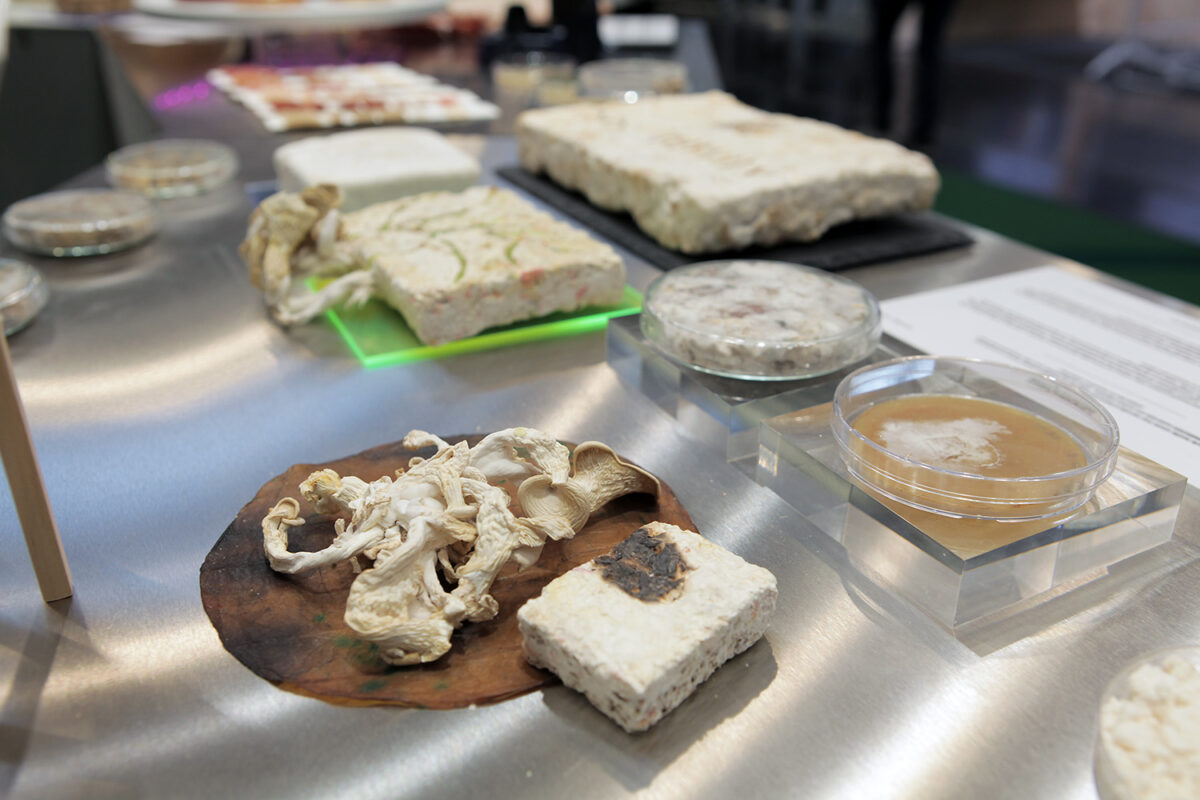
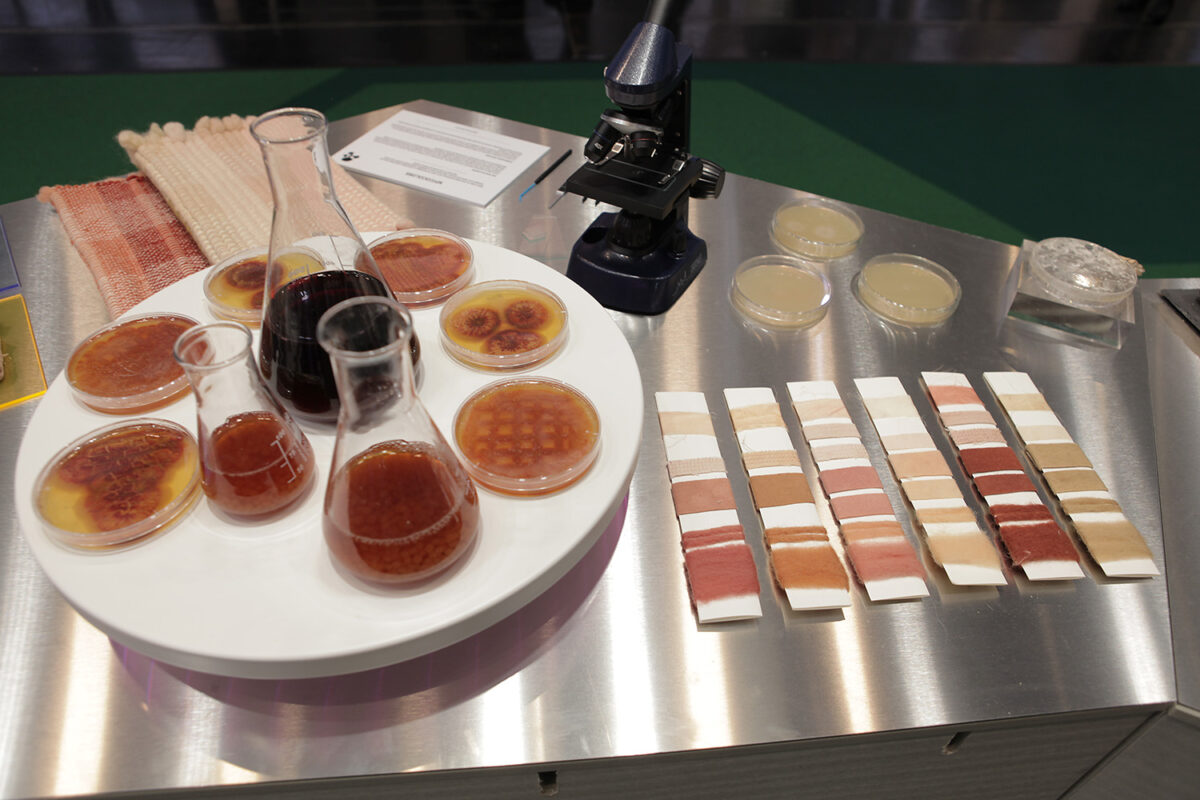
c
What is the role of Design within your practice? And what can Design do?
The design definitely plays an important role in our work since the design has so many different facets. Design thinking is certainly a tool applied in many projects, such as multi-stakeholder processes or the development of social innovation solutions. Then, design is an important part of our creative angle. Think of designing inspirational exhibitions such as the Material Lab and the Circular Experience. How do we find the right balance between aesthetics and functionality? Or our work, such as our No Going Back art project, where we want to use the power and creativity of art to reach different audiences with our impact messages.
c
The studio operates in many sectors, from hydroponic systems to scenarios for Tunisia’s digital future in 2035. I would like to ask you if you think we are close to a more sustainable life. What is still missing?
We are in times now where many things are changing in positive directions, but also many global challenges that keep increasing. We have multiple transformation processes going on; think of the energy transition, the transformation of mobility and cities, or the transformation of our food systems. However, having sustainable solutions present in the mainstream and in everyone’s daily lives is still a long way to go. Regarding our work at Studio Nima, we intentionally focus on a broad range of topics around the UN’s Sustainable Development Goals. We are curious to find connections between these various topics and problems because we believe that this is how innovative, impactful solutions can emerge.
c
What do you suggest to those who want to follow your path?
I hope we can inspire others to follow our paths. To bring sustainability and impact into the mainstream, many more creative minds who apply their skills and knowledge to solving social and environmental problems are needed. I am sure many of you are reading this who have tremendous skills but could push more to use these skills to contribute to solving some of our grand global challenges. A good question is: are you actively using your skills and energy to make the world a better place? Solving problems is fun; solving real problems in a meaningful and impactful way can even be more fun.
c
Studio Nima shows us a multidisciplinary approach in which design becomes one of many points of view to address the complexity of contemporary problems. It is not just a matter of designing something but of using one’s skills to create a new shared and accessible sensibility, from communicating circular materials within a new exhibition format to defining international policies for the circular economy. To learn more about the projects Studio Nima is involved in, visit their website and follow them on Instagram and LinkedIn!
c
